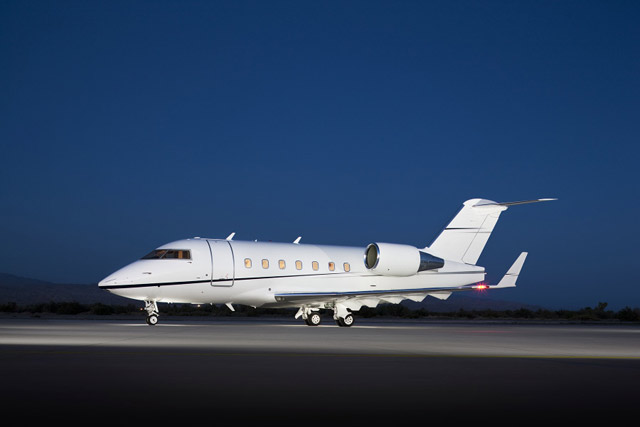Quick Look: Challenger 604
Fourth-generation wide-body bizjet is all about room

For many years, Bombardier’s Challenger line of business jets has set the standard for cabin comfort and luxury. In 1995, Bombardier certified the Challenger 604, which began deliveries as 1996 models. The 604 employed many improvements on the base Challenger 600 design. New engines and structural beef-ups allowed the 604 higher takeoff and landing weights. The addition of fuel tanks extended range to about 4,000 nm, giving the 604 true intercontinental range. Finally, Bombardier incorporated Rockwell Collins’ Pro Line 4 avionics system, which include a six-tube EFIS/EICAS system. Production continued through the 2007 model year when it was replaced by the model 605.
Some 604s have the Precision Plus upgrade, which include automatic look-up and display of takeoff, approach, and landing speeds. Precision Plus also calculates thrust (N1) settings for all phases of flight, allowing use of autothrottles and prolonging engine life through improved thrust management. Precision Plus is retrofittable to older models.
The big story with the Challenger series is its big cabins. Considered wide-bodied business jets, Challengers brought a new level of spaciousness to passengers who were used to Lears and Citations. At its widest point, the cabin is more than eight feet wide. Even Gulfstream owners were impressed with the roominess. For this reason, Challengers have always made popular charter airplanes.
With ample interior volume, Challengers often have opulent interiors—well-equipped cabins with huge seats, entertainment systems, and a large galley. In other words, passengers will not be disappointed in the 604’s accommodations, even on the long flights it’s capable of making.
Most operators cruise the airplane at Mach 0.80 using around 2,000 to 2,500 pounds per hour of Jet-A, depending on altitude.
Challengers are not known for their short-field capabilities, however, especially at heavy weights. At sea level on a standard day, balanced field length is nearly 6,000 feet of runway, which limits airports available to the 604. Throw some heat and elevation into the mix and the 604 will require almost 10,000 feet of runway to depart Denver when it’s about 80 degrees F. These numbers, however, are an improvement over previous Challenger models. At high weights, one operator we spoke with mentioned that climb rates in the mid-30s really start to fall off, and that limits initial cruise altitude to no more than FL350—or maybe FL370, in cold temperatures.
Vref values a 1996 model 604 at $4.8 million and range to $10.7 million for a 2007 model. Continuing a rich tradition of roominess and luxury, the Challenger 604 is still very much a player in the market 20 years after its introduction.
Pete Bedell is a pilot for a major airline who holds type ratings in the BAe Jetstream 41, Canadair RJ, Boeing 737, and Airbus 319/320.
SPEC SHEET
Bombardier Challenger 604
Powerplants | (2) General Electric CF34-3B, 8,729 lbst ea
Length | 68 ft 5 in
Height | 20 ft 8 in
Wingspan | 64 ft 4 in
Seats | 2 plus 9-19
Max takeoff weight | 48,200 lb
Takeoff distance (SL, Std) | 5,840 ft
Max cruise speed, FL410 | 470 KTAS/0.82 M
Landing distance | 2,777 ft
Range (w/NBAA IFR reserve) | 4,000 nm
Photography by Chad Slattery


